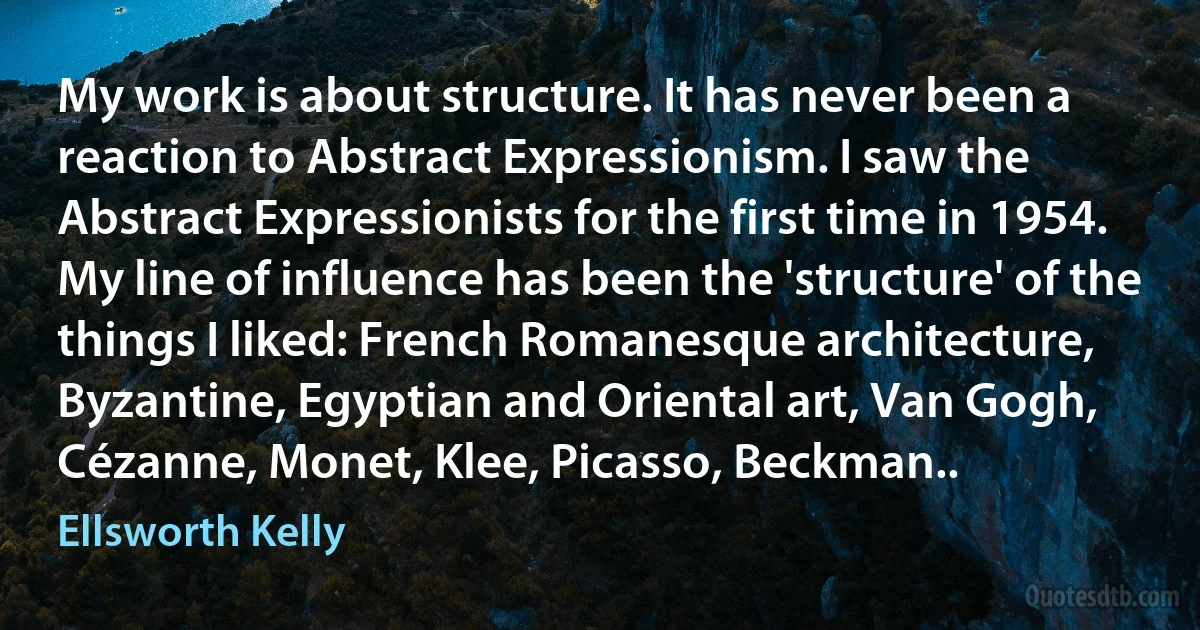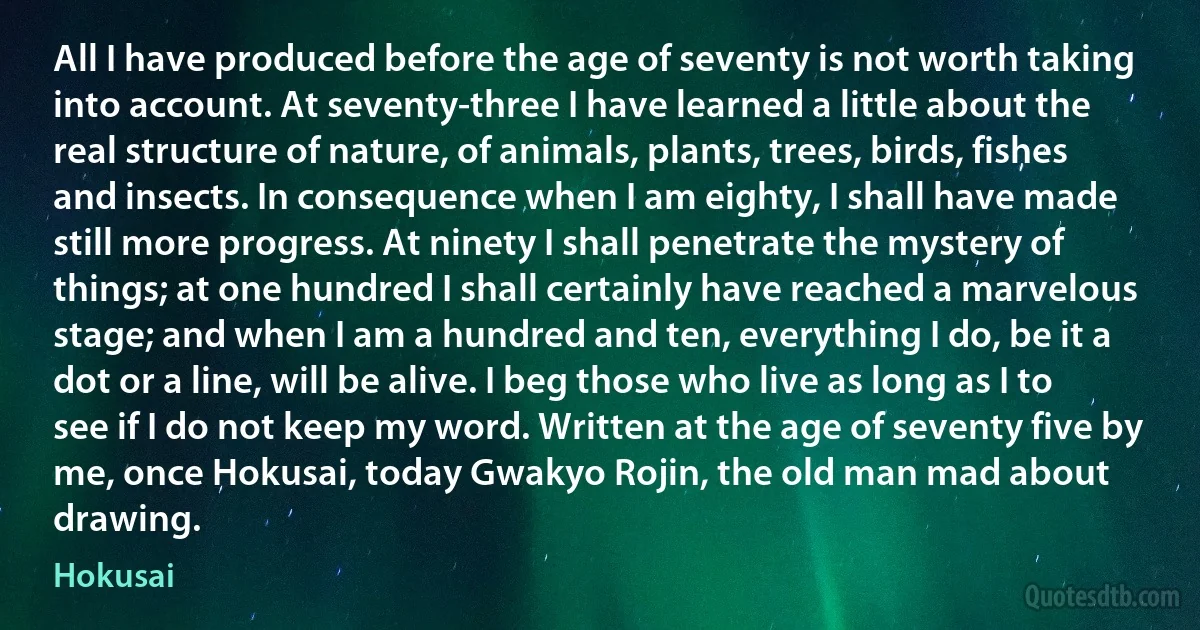Structure Quotes - page 25
To work on stage these days with all the advanced tools developed by the electronic industry, you can't sit down like in the old days and start noodling around on a three-chord basis. Today you need a kind of structure or even a very complex composition for communicating properly between a bunch of people. Nevertheless, there is still room for musical freedom and even improvisation.

Edgar Froese
Existing regulators had all the powers they needed, and more, and they failed miserably to foresee and prevent this crisis. Chris Dodd is now asking us to put all our eggs in one basket and trust a "super regulatory agency." He should know better than to centralize power in the hands of Washington bureaucrats - it's precisely the arrangement that caused our current problems. I think most Connecticut voters know that we need fewer czars in Washington, not more. As long as Fannie and Freddie and Congress are meddling with the economy, changing the structure of the regulators is basically rearranging deck chairs on the Titanic.

Peter Schiff
[...] we can strip off all grammatical clues to sentence structure, all affixes and prepositions, and yet still achieve communication. Thus restricted to nouns, simple "stories" can be told in word chains: Woman, street, crowd, traffic, noise, haste, thief, bag, loss, scream, police.... Again, the reader's past experience of his language is sufficient to restore the missing elements, sufficiently accurately for the purpose. But of course, not only does the reader have experience of sentence structure, enabling him to supply the missing syntactical elements, but also he has experience of typical contexts in which the various words are used; many words bear an aura about with them. It might be more difficult to tell a tale about a policeman who robbed a woman, for instance, with so little redundancy!

Colin Cherry
Nor is homosexuality without stake in this gendered sexual system. Putting to one side the obviously gendered content of expressly adopted roles, clothing, and sexual mimicry, to the extent the gender of a sexual object is crucial to arousal, the structure of social power that stands behind and defines gender is hardly irrelevant, even if it is rearranged.

Catharine MacKinnon
Lamarck taught not only that species had been constantly undergoing changes from one geological period to another, but that there also had been a progressive advance of the organic world from the earliest to the latest times, from beings of the simplest to those of more and more complex structure and from the lowest instincts up to the highest, and, finally, from brute intelligence to the reasoning powers of Man. The improvement in the grade of being had been slow and continuous, and the human race itself was at length evolved out of the most highly organised and endowed of the inferior mammalia.

Charles Lyell
I admired and felt the anonymous structure of the work of Brancusi, Vantongerloo, Arp, and Taeuber-Arp [the wife of Hans Arp] whose studios I visited. [Kelly frequently visited Hans Arp and his wife in Paris and discussed his fresh-made art with them intensively]. Their work reinforced my own ideas for the creation of a Pré-Renaissance, European type art: its anonymous stone work, the object quality of the artifacts, the fact that the work was more important than the artist's personality. Of the Europeans, I mostly admired the way Picasso, Klee and Brancusi 'made' their art. Contrary to what has been said about me, Mondrian and Matisse did not interest me when I was in Paris. Mondrian's [paintings] could not be seen in Paris and when I did see them in Holland in 1953, I thought their structure too rigid and intellectual.

Ellsworth Kelly
The penis -- if you think about it -- is the most enterprising engineering feat imaginable -- a cantilevered structure, hydraulics, propulsion, pistons, compression, inflation, heat sensitive -- practically every engineering characteristic -- towers, draw-bridges, rocket-ships -- no man-made engineering structure to match it.

Peter Greenaway
I can say without fear of falling into the slightest exaggeration that each outline of a rock, / and / of the beaches of Cadaques [in North-Spain, where Dali spent his childhood], each of the geological anomalies of its landscape and its unique light I know by heart, for in the paths of my wandering solitudes, it was these silhouettes of stones and its states of light attached to the structure / and the aesthetic substance / of the landscape that were the sole protagonists on the mineral impossibility of which I project day after day all the accumulated and chronically unsatisfied tension of mt erotic-emotional life.

Salvador Dalí
.. of what use is a painting which does not realize its aesthetical problem? Underlying all sensible works of art, there must be somewhere in evidence the particular problems understood. It was so with those artists of the great past who had the intellectual knowledge of structure upon which to place their emotions. It is this structural beauty that makes the old [clssical] painting valuable. And so it becomes to me a problem. I would rather be sure that I had placed two colors in true relationship to each other than to have exposed a wealth of emotionalism gone wrong in the name of richness of personal expression... The real artists have always been interested in this problem, and you feel it strongly in the work of [Leonardo] Da Vinci, Piero della Francesca, Courbet, Pissarro, Seurat, and Cezanne.

Marsden Hartley
It was in 1929 that Salvador Dali [Dali is writing about himself] brought his attention to hear upon the internal mechanism of paranoiac phenomena and envisaged the possibility of an experimental method based on the sudden power of the systematic associations proper to paranoia; this method afterwards became the delirio-critical synthesis which hears the name of "paranoiac-critical activity". Paranoia: delirium of interpretive association bearing a systematic structure. Paranoiac-critical activity: spontaneous method of irrational knowledge based upon the interpretive-critical association of delirious phenomena.

Salvador Dalí
What we tried to do, out of mutual loneliness, was make more out of the relationship than it could support. Then it becomes pretend, and you are both saying things cribbed from half-forgotten books and plays. So the structure slowly topples over, like vanilla ice cream piled too high. And the end of it there was an obscure impulse to shake hands.

John D. MacDonald
Saussure took the sign as the organizing concept for linguistic structure, using it to express the conventional nature of language in the phrase "l'arbitraire du signe". This has the effect of highlighting what is, in fact, the one point of arbitrariness in the system, namely the phonological shape of words, and hence allows the non-arbitrariness of the rest to emerge with greater clarity. An example of something that is distinctly non-arbitrary is the way different kinds of meaning in language are expressed by different kinds of grammatical structure, as appears when linguistic structure is interpreted in functional terms.

Michael Halliday
Any text in spoken English is organized into what may be called 'information units'. (...) this is not determined (...) by constituent structure. Rather could it be said that the distribution of information specifies a distinct structure on a different plan. (...) Information structure is realized phonologically by 'tonality', the distribution of the text into tone groups.

Michael Halliday
[... language, as an example of a semiotic system, contains all four levels of organization as follows:]
First, it is transmitted physically, by sound waves traveling through the air; secondly, it is produced and received biologically, by the human brain and its associated organs of speech and hearing; thirdly it is exchanged socially, in contexts set up and defined by the social structure; and fourthly it is organized semiotically as a system of meanings.

Michael Halliday



